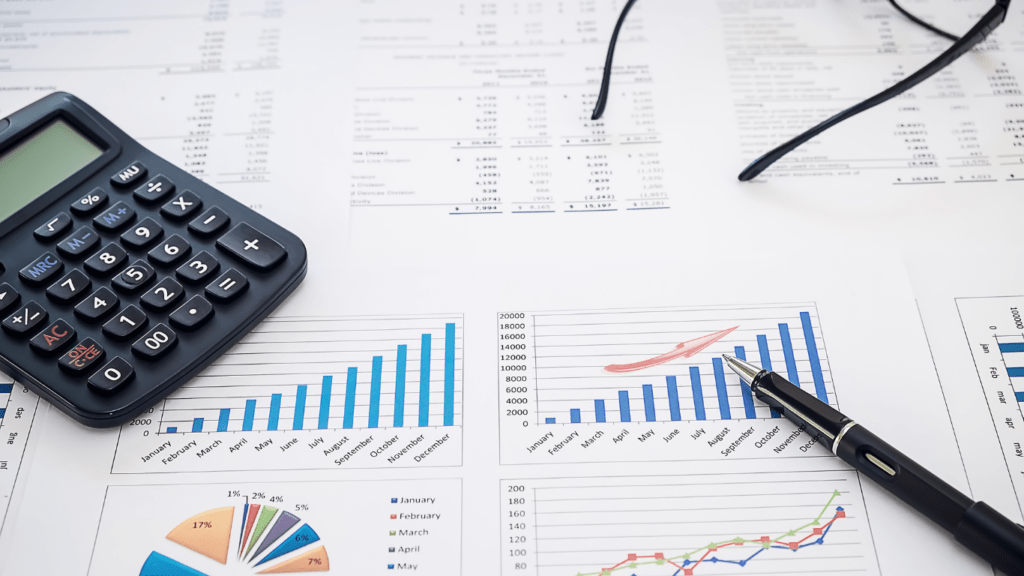In the fast-evolving landscape of finance, the emergence of tokenized assets has sparked a revolution in how we perceive and interact with traditional investments. As a seasoned observer of market trends, I’ve witnessed firsthand the transformative power of cryptocurrencies in reshaping the ownership dynamics of real-world assets.
With blockchain technology at its core, this paradigm shift is not just a trend; it’s a seismic change that’s redefining the very essence of asset ownership. Cryptocurrencies have not only democratized access to investment opportunities but have also paved the way for fractional ownership of high-value assets like real estate, art, and more.
As I delve into the intricacies of this digital transformation, it’s clear that the era of tokenized assets is here to stay, offering investors unprecedented liquidity, transparency, and security. Join me on this journey as we explore how crypto is revolutionizing the way we own and trade assets in the modern financial landscape.
Overview of Tokenized Assets
Tokenized assets represent a digital form of real-world assets, such as properties, art, or commodities, that are converted into tokens on a blockchain. These tokens are programmable and offer unique benefits to investors looking to diversify their portfolios.
- Increased Access to Investments: Tokenization allows for fractional ownership, meaning investors can buy a portion of an asset rather than the whole thing. For instance, instead of purchasing an entire building, investors can buy tokens representing a fraction of that property, making high-value assets accessible to a broader range of individuals.
- Enhanced Liquidity: Tokenization provides increased liquidity compared to traditional assets like real estate, which can be illiquid and challenging to sell quickly. By trading tokens on digital asset exchanges, investors can buy and sell their holdings more easily, thus improving liquidity in traditionally illiquid markets.
- Transparency and Security: Blockchain technology ensures transparency in the ownership and transfer of tokenized assets. Every transaction is recorded on the blockchain, creating an immutable ledger that enhances security and prevents fraudulent activities. Investors can verify ownership and track the history of assets in real-time, leading to a more secure investment environment.
- Fractional Ownership Opportunities: Tokenization offers the opportunity for fractional ownership of high-value assets, enabling investors to diversify their portfolios without significant capital outlay. This model opens up new investment avenues that were previously out of reach for individual investors, democratizing access to traditionally exclusive markets.
- Compliance and Regulation: As the tokenization of assets gains momentum, regulators are working to establish clear guidelines and frameworks to govern this emerging market. Compliance with regulatory standards ensures investor protection and fosters trust in the tokenized asset ecosystem, paving the way for broader adoption and integration into the traditional financial system.
By leveraging blockchain technology and smart contracts, tokenized assets are revolutionizing the way we perceive and interact with traditional investments, offering unparalleled opportunities for asset diversification, liquidity, and security in the modern financial landscape.
Benefits of Tokenized Assets
Tokenized assets offer various advantages over traditional investments, revolutionizing the way we perceive asset ownership. Let’s delve into the specific benefits:
Increased Liquidity
Enhanced liquidity is a key benefit of tokenized assets. Unlike traditional assets, tokenized assets can be traded on digital asset exchanges around the clock. This 24/7 trading capability provides investors with the flexibility to buy or sell their assets at any time, increasing overall market liquidity and enabling swift transactions.
Fractional Ownership
Tokenization enables fractional ownership, allowing investors to own a portion of high-value assets that would otherwise be out of reach. By dividing assets into tokens, investors can purchase as much or as little as they desire, making investment opportunities more accessible and inclusive.
This fractional ownership model democratizes investing and opens up new avenues for portfolio diversification.
Tokenization Process
Tokenization is the process of converting real-world assets, such as properties, art pieces, or commodities, into digital tokens on a blockchain. It involves representing ownership rights to these assets through tokens issued on a decentralized ledger.
To tokenize an asset, the issuer needs to determine the asset’s value, define the ownership rights that each token represents, and establish the rules governing the tokenized asset’s behavior within the blockchain network.
Once these parameters are set, smart contracts are used to enforce the rules and automate processes like dividend distributions or voting rights. The tokenization process offers several advantages, including increased liquidity, fractional ownership, and improved market access.
By breaking down high-value assets into tokens, investors can own fractions of assets that were previously out of reach, democratizing investment opportunities and promoting portfolio diversification.
Real-World Examples
Exploring real-world examples of tokenized assets in action provides insight into the practical applications of this innovative financial model and its impact on asset ownership dynamics.
- Real Estate: Tokenization has revolutionized real estate investment by breaking down the barriers to entry traditionally associated with property ownership. By tokenizing real estate assets, individuals can now invest in high-end properties with fractional ownership, enabling broader participation in lucrative real estate markets.
- Art: Tokenizing art pieces offers art enthusiasts and investors the opportunity to own a share of valuable artworks. Investors can buy tokens representing partial ownership of renowned paintings or sculptures, diversifying their portfolios with tangible assets that were previously inaccessible to many.
- Commodities: Tokenized commodities, such as gold or silver, allow investors to trade fractional ownership of physical assets. This form of tokenization provides exposure to commodity markets without the need for storage or handling of the actual goods, offering a convenient and accessible investment option.
- Venture Capital: Tokenization has disrupted traditional venture capital funding by enabling retail investors to participate in early-stage startup investments. Through tokens representing equity in startups, individuals can engage in a historically exclusive investment sector, fostering innovation and democratizing access to high-potential projects.
These real-world examples illuminate the versatility and democratizing nature of tokenized assets, showcasing how blockchain technology is reshaping traditional asset ownership structures across various industries.
Challenges and Risks
Tokenized assets present innovative opportunities in asset ownership; however, they also come with their set of challenges and risks.
- Regulatory Uncertainty: While regulators are working to establish guidelines for tokenized assets, the regulatory landscape remains relatively uncharted. This uncertainty can create challenges for investors in understanding their rights and protections within this evolving market.
- Security Concerns: Although blockchain technology offers security benefits, the digital nature of tokenized assets exposes them to cyber threats and hacking risks. Investors need to be cautious and ensure robust security measures are in place to safeguard their investments.
- Lack of Standardization: The tokenization process lacks standardized practices, leading to inconsistencies in asset tokenization across platforms. This lack of uniformity can make it challenging for investors to assess the true value and legitimacy of tokenized assets.
- Market Volatility: The crypto market is known for its volatility, which can significantly impact the value of tokenized assets. Investors must be prepared for sudden price fluctuations and the potential risk of losing value in a short period.
- Smart Contract Risks: Smart contracts govern the behavior of tokenized assets on the blockchain. However, vulnerabilities in smart contract code or execution can pose risks such as fund loss or asset mismanagement. Investors should conduct thorough due diligence on smart contracts to mitigate these risks.
- Illiquidity of Certain Assets: While tokenization enhances liquidity for many assets, certain illiquid investments may face challenges in finding buyers or sellers in the market. Investors should be aware of the liquidity profile of the tokenized assets they invest in.
- Operational Risks: Managing tokenized assets involves technical operations, compliance procedures, and governance structures. Operational risks such as system failures, regulatory non-compliance, or governance disputes can impact the performance and security of tokenized assets.
Understanding and mitigating these challenges and risks are crucial for investors looking to venture into the world of tokenized assets. By staying informed, adopting best practices, and leveraging security measures, investors can navigate the evolving landscape of tokenized asset ownership effectively.


 Mary Whitley has been a vital force behind the success of Lend Crypto Volt, focusing on community engagement and user experience. With a passion for connecting people to information, she has worked tirelessly to ensure the platform provides relevant and accessible content for all users. Mary's commitment to fostering an inclusive environment has helped build a strong community of crypto enthusiasts, making Lend Crypto Volt a trusted source for those seeking to understand the cryptocurrency landscape.
Mary Whitley has been a vital force behind the success of Lend Crypto Volt, focusing on community engagement and user experience. With a passion for connecting people to information, she has worked tirelessly to ensure the platform provides relevant and accessible content for all users. Mary's commitment to fostering an inclusive environment has helped build a strong community of crypto enthusiasts, making Lend Crypto Volt a trusted source for those seeking to understand the cryptocurrency landscape.